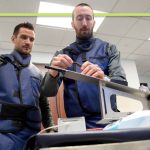5 Things That Can Affect the Timeline of Your Medical Device Prototype
Time and budget are of utmost importance during the prototype development process for new medical devices. Maintaining projections for new medical equipment is critical for medical device manufacturers and designers who are looking to bring a product to market quickly and efficiently. Creating a medical device prototype requires deliberate and specific steps and processes to ensure it is safe, effective, and of high quality for patients and other end users.
This phase during the development process can take months to years to complete. During medical device prototype development, testing and optimizing take place to further reinforce the structure, functionality and user experience. Many factors can impact the timeline of a medical device prototype, and they are important to keep in mind during early conversations and initial projections to set realistic expectations.
Product Design
Medical device design begins in early iterations of a product and does not end until the final product goes to market. Effective design is constantly inspected, reconsidered and improved. To develop looks-like, works-like prototypes, the design needs to be as close to finished as possible.
This is easier said than done. There are a lot of factors that go into medical device design, including UX/UI, functionality, size and reliability considerations. New medical device products need to meet certain standards and solve existing problems for patients or other end-users. The design of a device informs the prototype and requires plenty of time to ensure it is at its highest level of quality possible.
User Experience
User experience is one of the most important factors in medical device design. During prototype development, engineers will consider how real users, including patients, doctors and surgeons, will use and interact with the product. If the prototype design indicates that the product is difficult to use for any reason, or if it does not act like it is designed, the product needs to be redesigned.
Prototype development is an iterative process that is meant to hold a real product in your hand. This enables engineers and designers to determine how the user experience will develop and if the product is ready for testing and production.
Supply Chain
Supply chain challenges have been prominent among medical device manufacturers, along with countless other industries, for years now. Without the proper supplies or materials, medical device prototype development is difficult.
Engineers can navigate supply chain concerns by diversifying their operations, as well as looking to other methods for prototype development. Technology such as 3D printing enables engineers and manufacturers to create high-quality products and looks-like, works-like prototypes without relying on specific materials or other processes. 3D printing streamlines prototype development and allows engineers to conduct tests much more quickly.
IoT Integration
Depending on the medical device design, IoT may be a factor to consider during prototype development. Prototypes need to work as similarly as possible with the final iteration of the product. If connected technologies are to be incorporated into the product, they need to be replicated into the prototype as well.
IoT integration can delay prototype development, though necessarily so. By ensuring the connected technologies work in the prototype, engineers and developers can align on future refinements and iterations for the final product.
Alpha Testing
Testing prototypes can also influence the timeline of the product. Alpha testing is the first stage of testing new devices, and it is often a long process. This stage of prototype development is meant to identify as many issues and concerns as possible so that future iterations of the device are more refined and exact.
Alpha testing may or may not include end users, but it will require research and data gathering to inform engineers of opportunities to optimize the device.
Create Your Medical Device Design and Prototype
The timeline to create a new medical device design and prototype varies based on the type of device and the requirements of the product. More complex designs will take more teams to conduct research, development and testing. Simpler designs may be streamlined, though they still need to go through a development process that ensures safety and efficacy.
Designing new medical equipment requires teams of expert medical device manufacturers with experience using state-of-the-art technology and processes. Nextern’s engineering team is equipped with the expertise and technology necessary for the next generation of medical equipment. With proven design, supply chain, manufacturing and testing strategies, we invest in meaningful medical device projects that will impact the future of healthcare.
Contact Nextern and get started on bringing your prototype to life.







